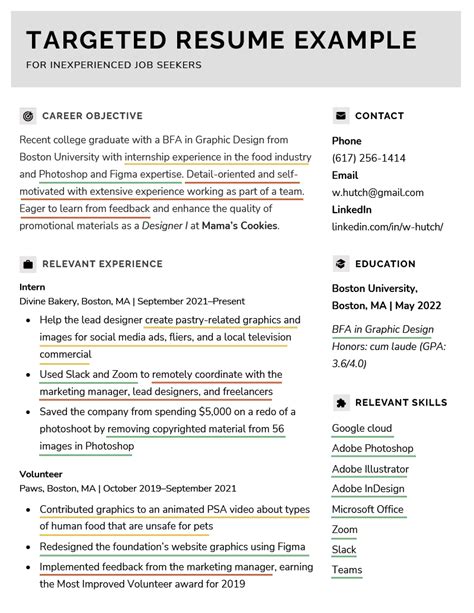Writing A Targeted Resume: Examples And Best Practices

When it comes to job hunting, your resume is your first impression. It’s the first thing potential employers see before they meet you in person. That’s why it’s essential to create a targeted resume that showcases your skills, experience, and achievements in a way that’s tailored to the job you’re applying for. In this post, we’ll show you examples of targeted resumes and best practices for creating one.
1. Understand the job requirements
Before you start writing your resume, you need to understand the job requirements. Read the job description carefully and make a list of the skills, experience, and qualifications that the employer is looking for. This will help you tailor your resume to the job and highlight the skills and experience that are most relevant.
Example:
If you’re applying for a marketing position, the job description may include requirements such as:
- Experience in digital marketing
- Knowledge of SEO and SEM
- Excellent communication skills
- Ability to work in a fast-paced environment
2. Customize your resume for each job
Don’t use the same resume for every job application. Customize your resume based on the job requirements. Highlight the skills and experience that are most relevant to the job and remove any irrelevant information. This will show the employer that you have the skills and experience they’re looking for.
Example:
If you’re applying for a digital marketing position, highlight your experience in digital marketing and your knowledge of SEO and SEM. If you’re applying for a social media position, highlight your experience in social media marketing and your knowledge of social media platforms.
3. Use keywords
Many employers use Applicant Tracking Systems (ATS) to screen resumes. These systems scan resumes for keywords that match the job requirements. To increase your chances of getting noticed, use keywords that are relevant to the job throughout your resume.
Example:
If the job description includes the keyword “SEO,” make sure to include it in your resume.
4. Highlight your achievements
Don’t just list your responsibilities. Highlight your achievements and how you’ve contributed to the success of your previous employers. This will show the employer that you’re a results-driven candidate.
Example:
Instead of saying “Managed social media accounts,” say “Increased social media engagement by 50% through targeted content and community management.”
5. Keep it concise
Your resume should be no longer than two pages. Keep it concise and to the point. Use bullet points to make it easy to read and scan.
Example:
Use short, sharp bullet points to highlight your skills and achievements:
- Increased website traffic by 30% through SEO optimization
- Managed a team of 10 people to successfully launch a new product
- Generated $500,000 in sales through targeted email marketing campaigns
6. Use a professional format
Use a professional format that’s easy to read and scan. Use a clear font and avoid using too many colors or graphics. Your resume should be easy on the eyes and professional.
Example:
Use a simple, professional format like this:
| Name | Phone | |
|---|---|---|
| John Doe | john.doe@email.com | 555-555-5555 |
7. Proofread your resume
Before you submit your resume, make sure to proofread it for spelling and grammar errors. You don’t want to make a bad impression by submitting a resume with errors.
Example:
Get a friend or family member to review your resume for errors. Sometimes it’s hard to spot errors in your own work.
Conclusion
Creating a targeted resume takes time and effort, but it’s worth it. A targeted resume will help you stand out from other candidates and increase your chances of getting noticed by potential employers. Use the tips and examples in this post to create a targeted resume that showcases your skills, experience, and achievements.
FAQs
What is a targeted resume?
A targeted resume is a resume that’s tailored to the job you’re applying for. It highlights the skills and experience that are most relevant to the job and removes any irrelevant information.
How do I customize my resume for each job?
Read the job description carefully and make a list of the skills, experience, and qualifications that the employer is looking for. Customize your resume based on this list. Highlight the skills and experience that are most relevant to the job and remove any irrelevant information.
What is an Applicant Tracking System?
An Applicant Tracking System (ATS) is a software system used by employers to screen resumes. The system scans resumes for keywords that match the job requirements.
How long should my resume be?
Your resume should be no longer than two pages.
Should I include my achievements on my resume?
Yes, you should highlight your achievements and how you’ve contributed to the success of your previous employers. This will show the employer that you’re a results-driven candidate.
